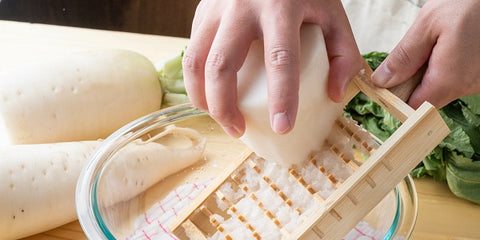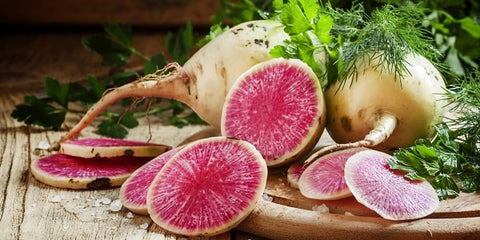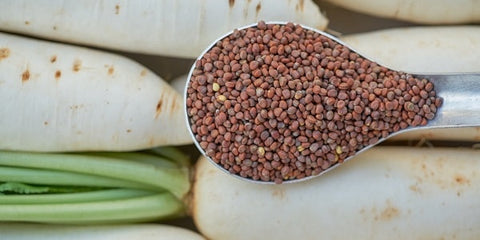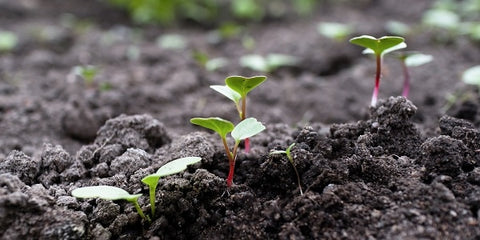Daikon Radishes

Daikon radishes are generally large, plump, long and white but can as also be
purple-skinned, purple-fleshed and even have variations with green involved.
They’re very popular in all Asian cuisines as they can be eaten raw or as a sprout, sliced, diced, grated, boiled, pickled, stir-fried, baked or cooked pretty much any way to suit whatever dish you’re serving - maybe not desserts though. Try grating daikons or putting them in a blender and using them to replace potatoes in hash browns or try 1 cup of grated daikon, ½ cup of finely chopped red onion and 2 cups of flour as a savoury pancake mix. Yum! Koreans highly rate Daikon in their Kimchi and Japanese people have a special dish called Kiriboshi which is daikon that’s been dried, spiced and shredded.

Daikons are one of the most nutritionally rich vegetables, low in calories and carbs, but high in fibre, Vitamin C and beneficial enzymes. They also have antibacterial, anti-inflammatory, anti-viral and diuretic properties with the radish juices strengthening the mucous membranes of the intestine. It's not surprising that Japanese people with a high intake of radish in their diet have the world's lowest incidence of bowel cancer!
Some people say that radishes repeat on you with a burp or, heaven forbid, give you gas in other ways but this is no more than what artichokes, asparagus, broccoli, cabbage, green peppers, celery or onions can do. Daikons are less likely to repeat as they’re sweeter, juicier and less spicy.

Easy to grow when given the right conditions, Daikons prefer the cooler months of spring and autumn and are inclined to bolt to seed if sown in summer unless they’re a hybrid type with bolt resistance. The seed is quick to germinate and prefers to be directly sown where it's going to grow. A cool ground germinator, it can be sown from early August in most NZ regions right through to mid-October to give a continuous supply. Start re-sowing in early March, right through to the end of April - good local knowledge of your seasons may lengthen or shorten your window of sowing opportunity.

Sow seeds into humus-rich, free draining soil 5–10cm apart in rows 15cm apart. After 3 weeks, thin out any extra seedlings to achieve a 15cm spacing in the row and eat these as baby veg, the leaves in a salad and the root either raw or lightly cooked to soften it. Daikons take approximately 60 days to mature and are best harvested promptly as leaving them in the ground can make the flesh start to separate and go woody. Once harvested, cut the tops off and store them in the fridge or in a cool place to stop them from dehydrating and going soft.

Pests and diseases aren’t usually too much of a problem although aphids in spring, white butterfly caterpillars and mildews in autumn can always be a nuisance if left unattended to build up in numbers.
Rotating your ground with non-brassica plants (radishes are closely related to cabbages and caulis) and keeping good airflow through your garden will always help.
Enjoy this good for you and easy to grow addition
to your garden this autumn!
























































